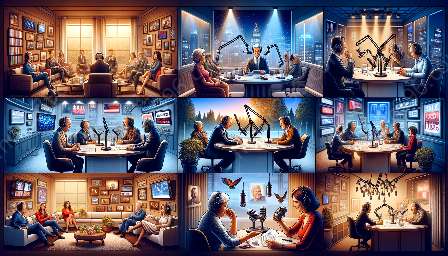Mobile radio technologies play a significant role in the development and implementation of IoT and smart city applications. From enabling seamless connectivity to supporting data transfer, mobile radio communications are a critical component of these innovative solutions. In this comprehensive guide, we will delve into the compatibility of mobile radio technologies with IoT and smart city applications, exploring the underlying principles, key technologies, and real-world applications.
The Role of Mobile Radio Technologies in IoT
IoT, or the Internet of Things, refers to the network of physical devices, vehicles, and other items embedded with electronics, software, sensors, and network connectivity, which enables these objects to collect and exchange data. Mobile radio technologies form the backbone of IoT by providing the communication infrastructure that allows these devices to connect, communicate, and share information. Through wireless communication protocols and standards, mobile radio technologies contribute to the seamless integration of IoT devices into various environments.
Compatibility with Mobile Radio Communications
Mobile radio communications encompass various forms of wireless communication technologies, including cellular networks, Wi-Fi, and Bluetooth. These communication methods are instrumental in establishing connections between IoT devices and enabling them to exchange data. Mobile radio technologies, such as GSM, LTE, and 5G, are designed to work seamlessly with mobile radio communications, ensuring reliable and efficient data transmission across IoT deployments.
Exploring Radio Technologies for IoT
When it comes to IoT and smart city applications, a range of radio technologies come into play, each offering unique capabilities to support diverse use cases. For instance, low-power wide-area network (LPWAN) technologies, including LoRa and Sigfox, are well-suited for long-range communication and are ideal for applications such as smart metering, asset tracking, and environmental monitoring. On the other hand, cellular technologies such as Narrowband IoT (NB-IoT) and LTE-M provide robust connectivity for IoT devices, enabling reliable communication and data transfer in urban environments.
Mobile Radio Technologies in Smart City Applications
Smart city initiatives leverage mobile radio technologies to transform urban landscapes, enhance infrastructure, and improve overall quality of life. These technologies facilitate the creation of interconnected systems that enable efficient resource management, intelligent transportation, public safety enhancements, and environmental monitoring. Within the context of smart cities, mobile radio technologies enable seamless connectivity between various devices, sensors, and infrastructure components, fostering a cohesive ecosystem designed to address urban challenges.
Real-World Applications and Use Cases
Real-world deployment of mobile radio technologies for IoT and smart city applications spans across numerous domains, ranging from smart transportation and energy management to public safety and environmental sustainability. For instance, smart parking solutions utilize mobile radio technologies to provide real-time parking availability information, enabling drivers to locate parking spaces efficiently. Additionally, environmental monitoring systems rely on mobile radio technologies to collect and transmit data on air quality, noise levels, and waste management, contributing to sustainable urban development.
Conclusion
Mobile radio technologies form an integral part of the rapidly evolving landscape of IoT and smart city applications. Their compatibility with mobile radio communications, coupled with their support for a diverse range of radio technologies, makes them essential for connecting and empowering the interconnected devices and systems that define the future of urban living. As IoT and smart city initiatives continue to advance, mobile radio technologies will play a pivotal role in driving innovation, fostering sustainability, and creating interconnected urban environments that prioritize efficiency, safety, and quality of life.









































